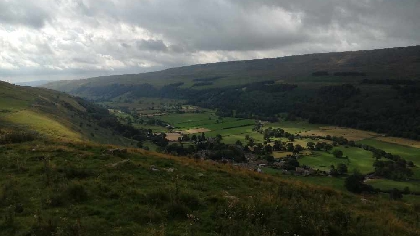
National Trust tenant farmers in the Yorkshire Dales National Park are helping to pave the way to public payments for natural flood management interventions on farmland.
A report published today by the Yorkshire ‘Integrated Catchment Solutions Programme’ (iCASP) describes how farmers in Malham, Wharfedale, Wensleydale and Swaledale have been engaged to develop natural flood management ‘outcome measures and monitoring approaches’.
‘Slowing the flow’ in the uplands to prevent flooding downstream is seen as a key element of the government’s forthcoming ‘public money for public goods’ Environmental Land Management scheme (ELMs)
The farmers were already testing a Payment for Outcomes scheme focused on pollinators when it was extended to include natural flood management. The scheme is one of two official ELMs tests and trials taking place in the National Park, the other being a pilot scheme in Wensleydale.
The iCASP report details how 10km2 of land on five farms was modelled for potential natural flood management measures. Farmers were then engaged to ‘ground truth’ the findings to make the most their local knowledge and ensure the measures would work with their businesses.
One of the report authors, Helen Keep, Senior Farm Conservation Officer at the Yorkshire Dales National Park Authority, said: “Intense rainfall here often causes flooding of properties, as well as damage to the land such as the washing away of footpaths. The last time it happened was earlier this month when flood waters breached many homes and brought down walls and bridges in Wensleydale and Wharfedale. High rainfall here can also cause major flooding in urban areas such as York and Leeds. There can be little doubt that paying farmers and landowners to put in natural flood management measures will bring many positive public benefits. The question is how to create a workable payment scheme.
“Our approach has been to engage with National Trust tenant farmers to better understand opportunities and constraints of natural flood management interventions. Conversations are now taking place with the famers about monitoring approaches and we will feed lessons learnt to Defra.
“One of the key findings in the report is that farmers are receptive to natural flood management, however the main barrier to implementation is the impact on the farm business. Interventions that can aid business such as soil interventions are viewed more positively by farmers than those associated with loss of productive land. A range of outcomes can be measured by monitoring and paid for accordingly. However when it would be very complicated to verify an outcome of a particular natural flood management intervention, we’ve learned that it might be easier to pay for the total volume of water stored on a farm.”
Tom Akrigg, who farms at Cray in Upper Wharfedale, said: "It was interesting to be involved with iCASP. The exercise provided us with an insight into the principles of natural flood management in the uplands. The process allowed us to see how specific measures might be integrated within our existing farming systems in order to help slow the flow of water from the land whilst qualifying for the proposed ELMS scheme."
Working with farmers to deliver landscape-scale natural flood management projects is an objective of the Yorkshire Dales National Park Management Plan 2019-24.
Common natural flood management measures include:
-better soil management to reduce soil compaction
-the planting of ‘buffer strips’ by watercourses, hedgerows, or trees
-the use of winter cover crops and other such land management techniques
-installing cross drains in steep farm tracks
-putting in bunds and detention basins including offline storage
-creating sediment traps
-using in-channel barriers such as large woody debris
-blocking moorland grips
- re-meandering and reconnecting a river to its floodplain.
A range of flood risk and environmental benefits can be achieved from these natural flood management measures. They include slowing flood peaks; reducing the depth and duration of flooding; reducing soil erosion and sediment input into the drainage network; increasing carbon storage; improving water quality; and increasing habitat connectivity.



 Pen-y-ghent path fixed
Pen-y-ghent path fixed
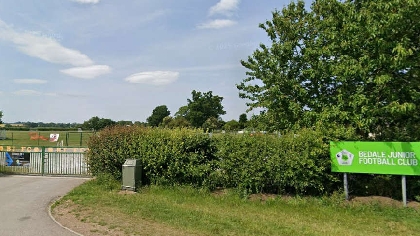 Good news for Bedale football club
Good news for Bedale football club
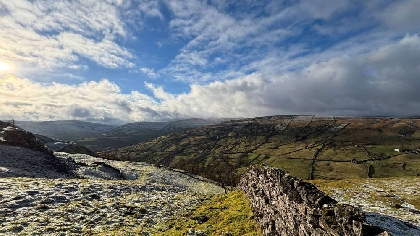 Dales photography competition returns to celebrate our most loved landscapes
Dales photography competition returns to celebrate our most loved landscapes
 Long-serving Yorkshire Dales park authority chief to retire
Long-serving Yorkshire Dales park authority chief to retire
 Skipton Street Marshals to return and support welfare over busy festive period
Skipton Street Marshals to return and support welfare over busy festive period
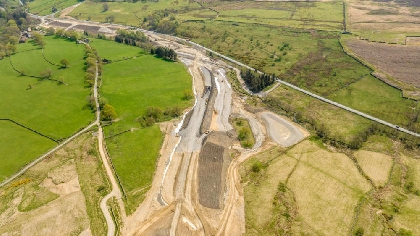 Don’t blame wildlife for £11.7m Kex Gill overspend, say Green councillors
Don’t blame wildlife for £11.7m Kex Gill overspend, say Green councillors
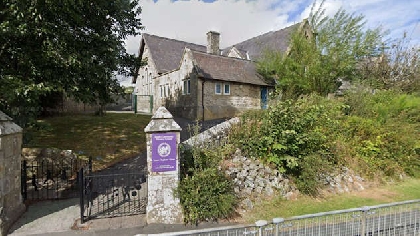 Dales school restructuring won’t make difference to pupils education
Dales school restructuring won’t make difference to pupils education
 Details behind sudden closure of A66 cafe emerge
Details behind sudden closure of A66 cafe emerge




